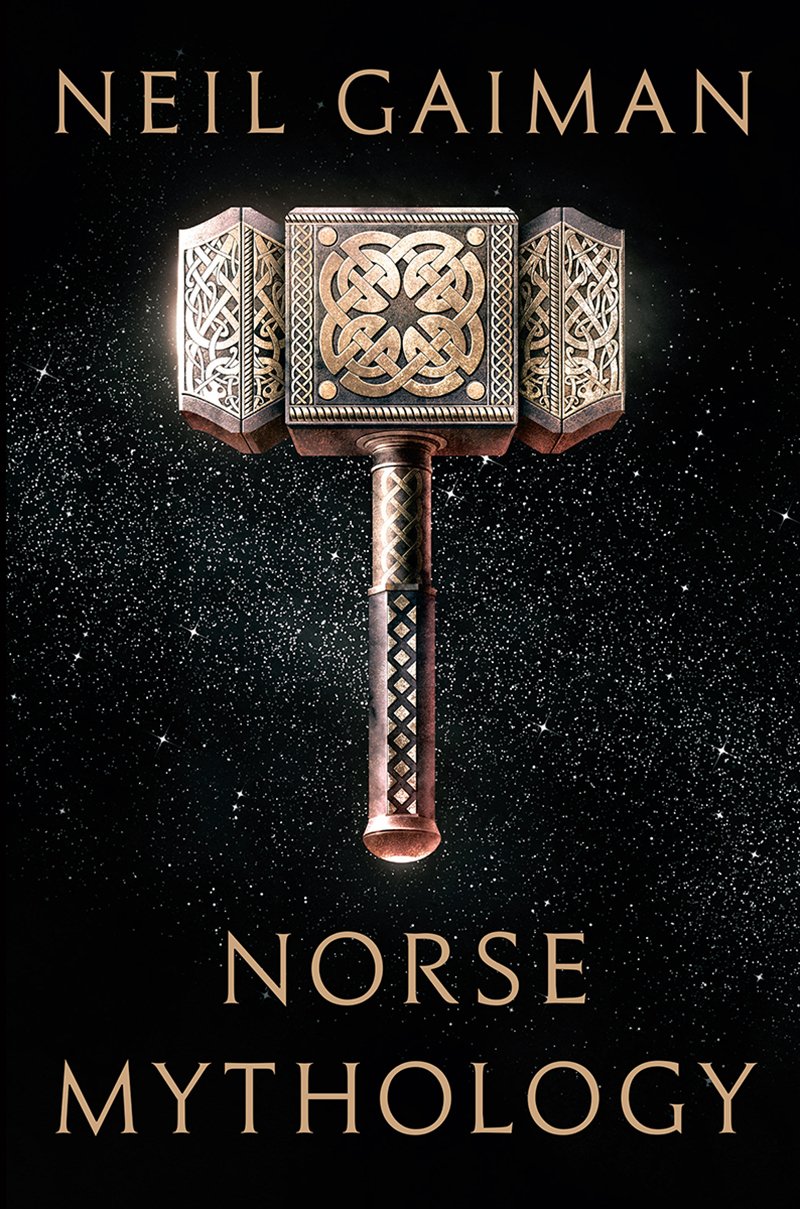Neil Gaiman respects the old gods, and that’s why he’s the proper man to write their tales. Gaiman did not just read tales that modern men have written to decipher the old god’s realities. He went back and studied the original translations of Snorri Sturluson’s Prose Edda and the verses of the Poetic Edda, which was written 900 years ago, in order to reveal the stories of the old gods.
Think back to the early history of humankind—when men, women and children huddled around fires at the entrances of their caves or before giant fireplaces in the stone houses of the Vikings—and you’ll be able to come to an understanding of the old gods.
Odin, Thor, Loki, Tyr the one handed (Odin’s Son) and Frigg, the queen of the gods, are the namesakes of some of the days of the week, for instance. Odin was called Wednesday; Frigg was called Friday, just to name two of them.
 Hear the tale of Odin, the greatest of the gods, who, to seek knowledge and runes, sacrificed himself on the World Tree, Yggdrasil, on which he hung for nine days and nine nights. During that time, his side was pierced by the point of a spear, and yet, he lived and hung on the tree without eating or drinking, alone in great pain. Suddenly, just before death took him, he peered down at the ground, and the runes of knowledge were revealed to him.
Hear the tale of Odin, the greatest of the gods, who, to seek knowledge and runes, sacrificed himself on the World Tree, Yggdrasil, on which he hung for nine days and nine nights. During that time, his side was pierced by the point of a spear, and yet, he lived and hung on the tree without eating or drinking, alone in great pain. Suddenly, just before death took him, he peered down at the ground, and the runes of knowledge were revealed to him.
Odin came to understand them, and his ropes disintegrated as the great god fell from the tree, knowing the power of magic and having the ability to control the world. Now then, think of Jesus on the cross, with his side pierced by the spear. Who is the older of the gods?
Neil Gaiman spins the webs of the gods’ lives in “Norse Mythology,” tale after tale. Did he drink mead, the poetic drink of the gods, while he was writing these tales? It may well be so.
One of the tales is called, “The Treasures of The Gods.” It is the best story about Loki, the trickster god, I have ever read. It starts with a tragic event and ends with everyone being happy—all that is, except for Loki. It also reveals how many of the treasures of the gods were created, even the great hammer of Thor.
One of Loki’s greatest tricks is to change his shape and appear as anything or anyone he wants. He used this trick to thwart the Master Builder from finishing Asgard’s great wall on time.
Loki was married but he carried his ways into marital bliss. It was bliss to him, but his wife Sigyn had her doubts. These doubts were well founded, for Loki would disappear for a time, and then, when he returned, he was happy, but Sigyn was not. After Loki’s third disappearance, Odin dreamed into Loki’s travels and found that he was carrying on with a giantess named Angrboda.
Loki had three children with Angrboda. One child called herself Hel; another of the children was called Jormungundu; and the third child was called Fenrir. These were Loki’s children with the giantess; he had two children with his wedded wife; one called Narfi, who was not well-behaved, and another called Vali, who was obedient and restrained. However, it’s Loki’s children with the giantess that this story is about. You will understand when you read the story of “The Children of Loki.” That doesn’t mean you will know what you understand.
The stories in “Norse Mythology” just keep getting better. Another great story is called “The Apples of Immortality.” After all, the gods don’t stay young just because they’re gods. What would happen if someone stole the apples of immortality? Only Loki, the god of mischief, could have a hand in something like this.
I believe that Neil Gaiman was one of the gifts of the gods; otherwise, he wouldn’t be able to spin such tales from the past. I wonder, in the end, if Neil Gaiman will pay the price for his tales. If the gods read these stories, they may get want to get even with him.
As I read “Norse Mythology,” I have come to wonder whether Neil Gaiman is really Loki in human form. Gaiman’s stories have tricks in them that only Loki could conceive. Sometimes I think that only Loki or Joe Hill could achieve such a feat, but Neil Gaiman pulls it off wonderfully.

Leave a Reply
You must be logged in to post a comment.